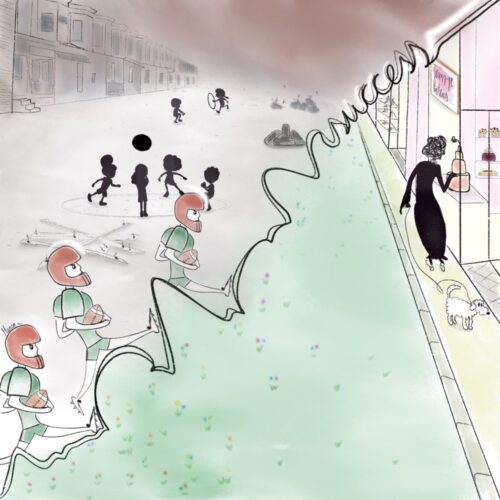Homefield Disadvantage- Rival Bay Area Football Programs Struggle With Gentrification
By Kaiyo Funaki
kaiyo.funaki@gmail.com
At first glance, football and gentrification appear to have no correlation. The former is a physical and violent game, a sport that can take just as easily as it can give. The latter is an omnipresent threat to underfunded neighborhoods, evicting the less fortunate from their childhood homes, and replacing cultural landmarks with shiny new condos and overpriced coffee shops. However, in the Bay Area, they are two pieces of the same puzzle that do not fit.
The critically-acclaimed Netflix documentary “Last Chance U” examined this peculiar dynamic in their latest season, featuring Oakland’s own Laney College..
Unlike the previous community college teams the crew followed, Laney College is a commuter school that does not provide any on-campus housing. As a result, many of the players find themselves struggling to balance life on and off the field in a city rapidly becoming more and more expensive.

Laney’s athletic director and head coach of the football team John Beam reflected in the show on the rapid development of the city he so proudly represents.
“Oakland has gone through this whole redevelopment and gentrification over the last 10 years,” he said. “The black community is being forced out moving further out into the suburbs…now it’s so gentrified you’re lucky to get a house for $800,000.”
Identity Crisis
Oakland provides a complex crossroad for race, socioeconomic inequalities and sports to collide.
Black people accounted for nearly 47% of the city’s population in the 1980s but only made up an estimated 23.7% as of 2019, according to the U.S. Census Bureau. This mass exodus of the Black community and other people of color can be largely attributed to the tech boom in the Bay Area driving up the prices of the real estate market.
A new study released in June 2020 by the National Community Reinvestment Coalition showed that San Francisco and Oakland had a combined 31% of their economically disadvantaged neighborhoods undergo gentrification between 2013 and 2017, by far the highest rate in the country.
Furthermore, Black student-athletes made up nearly 40% of the 73,000 total football players participating under the NCAA in 2019. Though demographic data for the CCCAA is not available, a similar proportion can be assumed.
With all these factors taken into consideration, a majority of football players at Laney persevere through difficult circumstances that are burdensome to their academics and athletics.
For those with dreams of playing at a major college program and eventually in the NFL, gentrification has only compounded the improbable path they have already begun.
Some of the student-athletes in the documentary described their experiences with homelessness and couch surfing, while others commuted hours to get to school.
In one episode, President of Laney College Tammeil Gilkerson emphasized the enduring question that Laney student-athletes and all Oakland natives have encountered as a result of this ongoing crisis.
“We’ve seen the migration of folks who can not afford to live here anymore, moving out deeper into suburbs. And so the community has really struggled with ‘How do we keep our place here?’”
Different Teams, Same Opponent
City College made a brief cameo in the documentary, as the two colleges faced off against each other in a crucial regular-season matchup.
Prior to the game, both players and coaches for Laney relayed their distaste for San Francisco and the college, citing the city’s pretentious and picturesque aurora.
Despite the animosity these football programs have for each other, there is still a common denominator that plagues both of these colleges and their respective cities. Just like their rivals from across the bay, City College student-athletes have also dealt with the repercussions of gentrification.
Katie Marquez, athletic counselor as well as a San Francisco native and City College alum, underscored how deep the impact of this issue runs.
“When a student can’t afford to eat properly, when a student can’t afford that extra dollar
or two every day to get across the bridge to play for us, these are things that inhibit our program. Because of gentrification, we have less athletes to choose from our own city,” Marquez said.
“Their schedules are incredibly dense; when they’re not in school, they’re at practice, and when they’re not at practice, they’re working or helping their families. They have all these other things they need to do too because they can’t afford to live here.”
